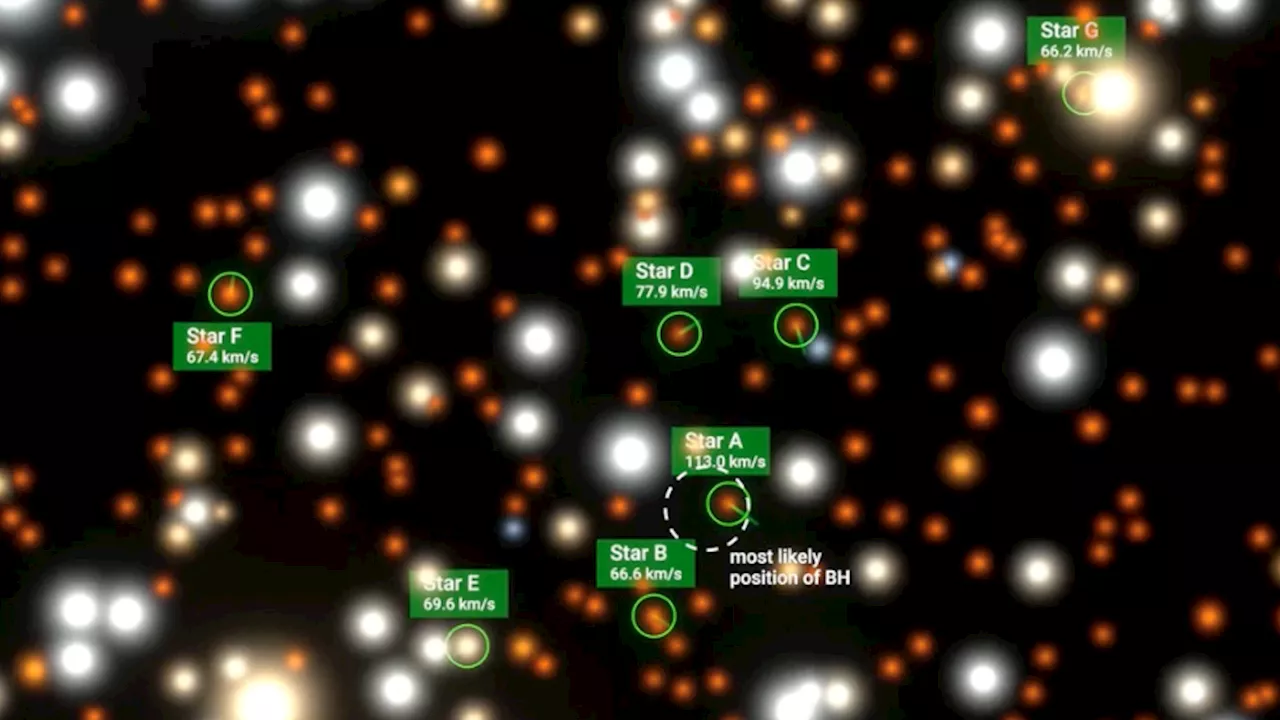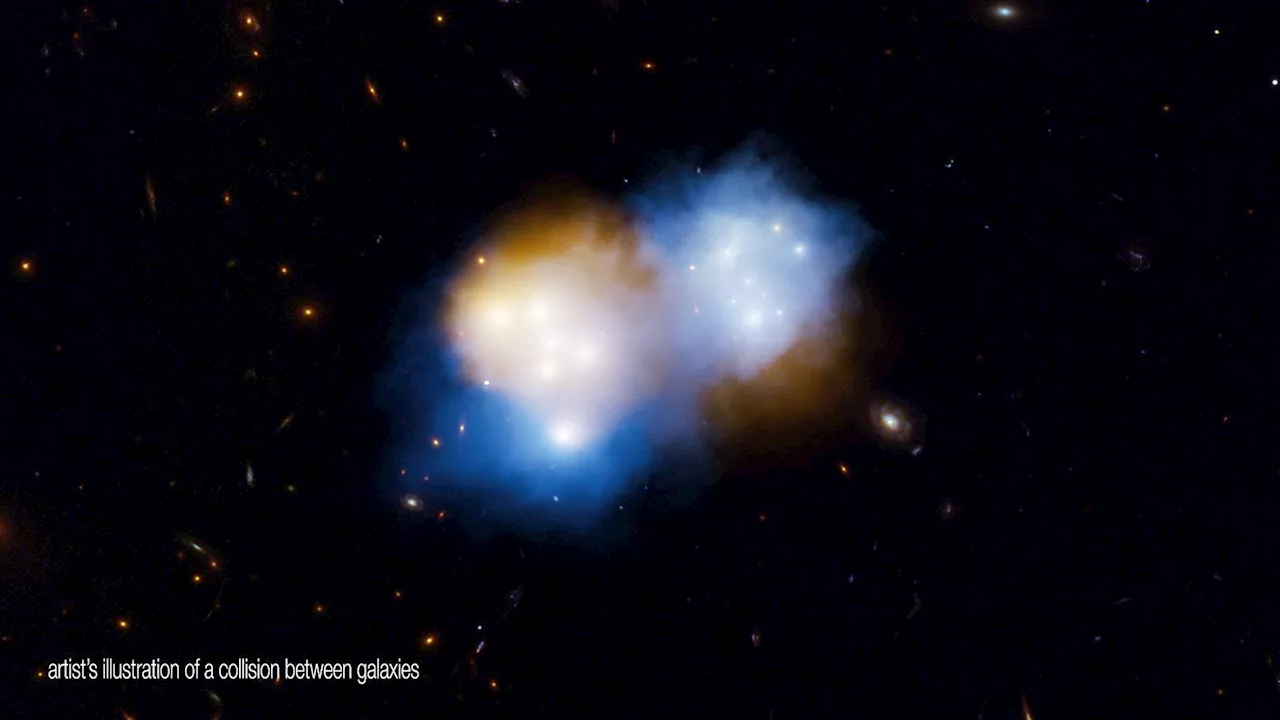Astronomers have untangled a messy collision between two massive clusters of galaxies in which the clusters' vast clouds of dark matter have decoupled from the so-called normal matter. The two clusters each contain thousands of galaxies and are located billions of light-years away from Earth.
Dark matter flies ahead of normal matter in mega galaxy cluster collision retrieved 24 July 2024 from https://phys.org/news/2024-07-dark-flies-mega-galaxy-cluster.html
This document is subject to copyright. Apart from any fair dealing for the purpose of private study or research, no part may be reproduced without the written permission. The content is provided for information purposes only.Jul 23, 2024 Use this form if you have come across a typo, inaccuracy or would like to send an edit request for the content on this page. For general inquiries, please use ourThank you for taking time to provide your feedback to the editors.
Your feedback is important to us. However, we do not guarantee individual replies due to the high volume of messages.to let the recipient know who sent the email. Neither your address nor the recipient's address will be used for any other purpose. The information you enter will appear in your e-mail message and is not retained by Phys.org in any form.Get weekly and/or daily updates delivered to your inbox.
Physics News Science News Technology News Physics Materials Nanotech Technology Science
United Kingdom Latest News, United Kingdom Headlines
Similar News:You can also read news stories similar to this one that we have collected from other news sources.
 Astronomers suggest up to 60% of near-Earth objects could be dark cometsUp to 60% of near-Earth objects could be dark comets, mysterious asteroids that orbit the sun in our solar system that likely contain or previously contained ice and could have been one route for delivering water to Earth, according to a University of Michigan study.
Astronomers suggest up to 60% of near-Earth objects could be dark cometsUp to 60% of near-Earth objects could be dark comets, mysterious asteroids that orbit the sun in our solar system that likely contain or previously contained ice and could have been one route for delivering water to Earth, according to a University of Michigan study.
Read more »
 Astronomers discover Earth’s closest black holeAndrew Paul is Popular Science's staff writer covering tech news. Previously, he was a regular contributor to The A.V. Club and Input, and has had recent work featured by Rolling Stone, Fangoria, GQ, Slate, NBC, as well as McSweeney's Internet Tendency. He lives outside Indianapolis.
Astronomers discover Earth’s closest black holeAndrew Paul is Popular Science's staff writer covering tech news. Previously, he was a regular contributor to The A.V. Club and Input, and has had recent work featured by Rolling Stone, Fangoria, GQ, Slate, NBC, as well as McSweeney's Internet Tendency. He lives outside Indianapolis.
Read more »
 Astronomers could use a synthetic cosmos to unravel dark matter mysteriesRobert Lea is a science journalist in the U.K. whose articles have been published in Physics World, New Scientist, Astronomy Magazine, All About Space, Newsweek and ZME Science. He also writes about science communication for Elsevier and the European Journal of Physics. Rob holds a bachelor of science degree in physics and astronomy from the U.K.
Astronomers could use a synthetic cosmos to unravel dark matter mysteriesRobert Lea is a science journalist in the U.K. whose articles have been published in Physics World, New Scientist, Astronomy Magazine, All About Space, Newsweek and ZME Science. He also writes about science communication for Elsevier and the European Journal of Physics. Rob holds a bachelor of science degree in physics and astronomy from the U.K.
Read more »
 How astronomers are using pulsars to observe evidence of dark matterTantalizing evidence of potential dark matter objects has been detected with the help of the universe's 'timekeepers.' These pulsars—neutron stars which rotate and emit lighthouse-like beams of radio waves that rapidly sweep through space—were used to identify mysterious hidden masses.
How astronomers are using pulsars to observe evidence of dark matterTantalizing evidence of potential dark matter objects has been detected with the help of the universe's 'timekeepers.' These pulsars—neutron stars which rotate and emit lighthouse-like beams of radio waves that rapidly sweep through space—were used to identify mysterious hidden masses.
Read more »
 How astronomers are using pulsars to observe evidence of dark matterTantalizing evidence of potential dark matter objects has been detected with the help of the Universe's 'timekeepers'. These pulsars -- neutron stars which rotate and emit lighthouse-like beams of radio waves that rapidly sweep through space -- were used to identify mysterious hidden masses.
How astronomers are using pulsars to observe evidence of dark matterTantalizing evidence of potential dark matter objects has been detected with the help of the Universe's 'timekeepers'. These pulsars -- neutron stars which rotate and emit lighthouse-like beams of radio waves that rapidly sweep through space -- were used to identify mysterious hidden masses.
Read more »
 Could super-Earths or mini-Neptunes host life among the stars?As the hunt for habitable Earth-like planets stalls, astronomers are turning to bigger worlds
Could super-Earths or mini-Neptunes host life among the stars?As the hunt for habitable Earth-like planets stalls, astronomers are turning to bigger worlds
Read more »
